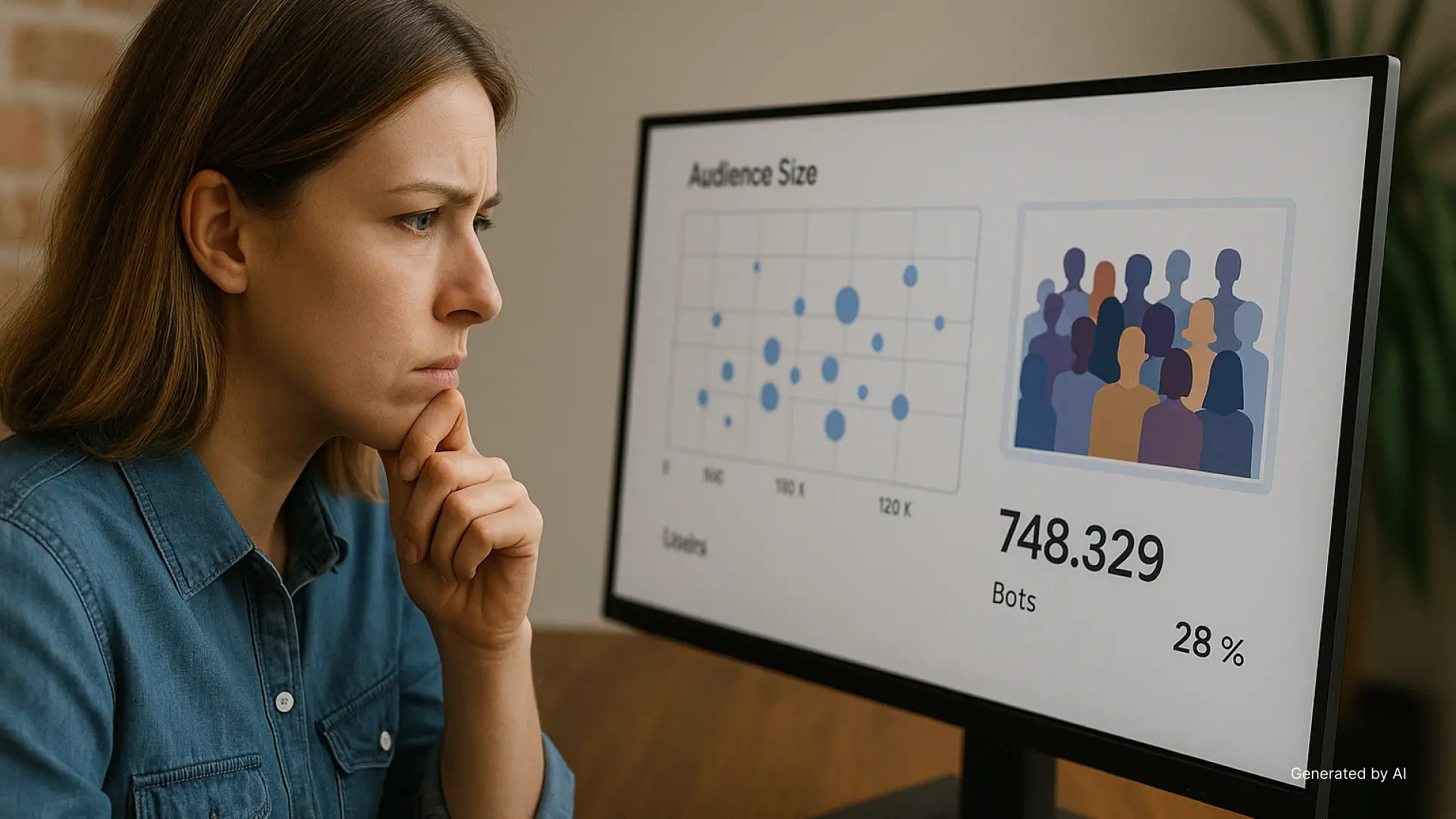The Impact of Color Psychology in Digital Branding
Introduction: Setting the Stage for Color’s Influence in 2025 Digital Branding
Color transcends mere aesthetic appeal in the digital landscape; it functions as a potent instrument capable of molding perceptions, eliciting emotions, and ultimately guiding decisions. Studies indicate that a substantial portion of initial impressions and judgments regarding products are formed based on color alone, underscoring its pivotal role in the realm of digital marketing. In the year 2025, a profound understanding and strategic application of color psychology will be indispensable for brands striving to forge meaningful connections with their audience, cultivate trust, and effectively drive conversions. This exploration will delve into the significant impact of color psychology on online branding strategies within the context of 2025, furnishing businesses with valuable insights and practical guidance to harness the power inherent in color. The profound influence of color on how individuals perceive brands and make choices cannot be overstated. This makes a deep dive into its psychological underpinnings and strategic applications in the current digital era particularly relevant for businesses aiming to thrive.
Decoding the Fundamentals of Color Psychology for Online Brands
The Emotional Spectrum: How Colors Evoke Feelings in the Digital Space
Diverse colors possess the remarkable ability to trigger specific emotions and associations, exerting a considerable influence on how users engage with a brand in the online sphere.
- Blue: Frequently linked to feelings of trust, tranquility, and security, blue emerges as a favored selection for companies operating within the finance, healthcare, and technology sectors. The widespread adoption of blue by industries where credibility and assurance are paramount suggests a deeply ingrained psychological connection between this hue and notions of reliability and professionalism. The consistent appearance of blue in the branding of financial institutions and healthcare providers across various studies and observations underscores the well-established understanding of its calming and trustworthy attributes, positioning it as a strategic choice for these sectors seeking to instill confidence in their target audience.
- Red: Often associated with excitement, passion, and a sense of urgency, red is frequently employed in retail environments and for call-to-action buttons, effectively prompting swift decision-making. The strategic utilization of red for calls to action and promotional sales indicates its potency in capturing attention and encouraging immediate engagement, likely stemming from its inherent associations with energy and urgency. The recurring mention of red in the context of sales promotions and call-to-action elements strongly suggests a direct correlation between this vibrant color and its capacity to generate a sense of immediacy and stimulate prompt interaction from online users.
- Green: Commonly associated with concepts of growth, health, and nature, green is a frequent choice for brands that emphasize sustainability and wellness in their offerings. The robust connection between green and the natural world, coupled with its associations with well-being, positions it as a strategic asset for brands aiming to communicate their commitment to environmental responsibility and the health of their consumers. The consistent linking of green to nature, health, and sustainability across numerous sources underscores its inherent ability to evoke feelings of freshness and ecological awareness, rendering it a logical and impactful choice for brands operating within these specific sectors.
- Yellow: Frequently conveys feelings of optimism, happiness, and energy, making it a popular color for attracting attention, particularly among younger demographics and for brands that offer budget-friendly products or services. The inherent brightness of yellow, coupled with its strong associations with sunshine and positivity, makes it an effective tool for cultivating a brand perception that is both upbeat and energetic, especially for products or services specifically designed to appeal to a youthful consumer base. The consistent association of yellow with optimism, happiness, and its prevalence among brands targeting younger audiences strongly suggests its effectiveness in establishing a brand image that is both cheerful and easily approachable.
- Purple: Often signals luxury, creativity, and sophistication, making it a favored hue among premium brands and those specializing in beauty products. Purple’s historical ties to royalty, combined with its contemporary use by high-end brands, suggests its enduring power in conveying a sense of exclusivity and superior quality. The recurring association of purple with royalty, luxury, and premium brands clearly indicates its effectiveness in creating an aura of sophistication and exclusivity that resonates with consumers seeking high-value products and experiences.
- Black: Commonly projects an air of sophistication, power, and elegance, frequently employed by high-end fashion labels and technology companies. The timeless and sophisticated nature of black renders it a reliable choice for brands aspiring to cultivate an image that is sleek, commanding, and indicative of luxury. The consistent utilization of black by prominent high-end fashion houses and technology innovators strongly suggests its effectiveness in communicating a sense of sophistication, authority, and enduring elegance.
- White: Typically represents purity, cleanliness, and simplicity, often favored by brands within the technology sector and those embracing minimalist design philosophies. White’s inherent associations with cleanliness and simplicity render it an ideal choice for brands seeking to project a modern, uncluttered, and inherently pure image to their target audience. The frequent adoption of white by technology companies and brands championing minimalism indicates its effectiveness in conveying a sense of simplicity, pristine quality, and contemporary design.
Understanding Color Associations and Their Impact on User Perception
The associations people form with colors are shaped by a combination of innate biological responses and learned cultural conventions, implying that the same color can elicit varied reactions across different demographic groups and geographical regions. The interplay between inherent human responses to color and the meanings assigned to them by different cultures highlights the nuanced nature of color psychology and the critical need for businesses to thoroughly understand their target audience’s background. The fact that color perception is not universally uniform but is instead influenced by both biological predispositions and cultural experiences underscores the importance of conducting thorough audience research and exercising cultural sensitivity when making decisions about brand colors, particularly for companies with a global market presence.
The consistent application of brand colors has been shown to elevate brand recognition by as much as 80%, underscoring the significance of developing and adhering to a strategic and uniform color palette. This substantial statistic regarding brand recognition emphasizes the enduring value of employing colors consistently in building a robust and easily identifiable brand identity over time. The compelling data point indicating a potential 80% increase in brand recognition through the consistent use of color provides a strong rationale for businesses to invest in crafting a well-defined brand color palette and ensuring its uniform application across all brand touchpoints.
Color plays a significant role in influencing consumer purchase decisions, with a notable proportion of individuals basing their choices on the visual attributes of a product, including its color scheme. This direct correlation between color and buying behavior emphasizes the potential for strategically selecting brand colors to positively impact a company’s sales figures and overall conversion rates. The research reveals that a considerable percentage of consumer purchasing decisions are driven by visual factors, with color being a key determinant, highlighting the tangible impact that color psychology can have on a business’s financial performance.
Navigating the 2025 Color Landscape for Effective Digital Branding
Key Color Trends Dominating the Digital Sphere in 2025
- Pantone’s Color of the Year 2025: Mocha Mousse (PANTONE 17-1230): This warm, natural brown hue symbolizes stability, comfort, and elegance, reflecting a prevalent desire for reassurance and the appreciation of simple pleasures. Pantone’s selection of Mocha Mousse suggests a broader movement towards earthy and comforting tones, potentially mirroring current global sentiments and a yearning for grounding in an often chaotic world. The choice of Mocha Mousse as Pantone’s color of the year signals a cultural inclination towards warmth, comfort, and elements reminiscent of the natural world, which brands can effectively utilize to resonate with consumers seeking these specific qualities in their interactions and purchases.
- Benjamin Moore’s Color of the Year 2025: Cinnamon Slate (2113-40): This rich and warm earthy terracotta shade embodies a sense of grounded, timeless elegance, making it well-suited for creating digital spaces that feel both cozy and restorative. Similar to Pantone’s choice, Benjamin Moore’s selection of Cinnamon Slate reinforces the emerging trend towards warm, nature-inspired hues in design. The selection of Cinnamon Slate by Benjamin Moore, another warm and earthy tone, further substantiates the growing preference for colors that evoke feelings of comfort and a connection to the natural environment within the realm of digital design.
- Hyper-Saturated Gradients: The use of bright and vibrant color transitions is anticipated to maintain its popularity for social media platforms and online interfaces, effectively capturing attention within the often-crowded digital environment. This ongoing trend suggests a persistent need for visually striking and dynamic content that can effectively cut through the digital noise and capture the fleeting attention of online users. The prediction that hyper-saturated gradients will continue to be a prominent design element indicates a sustained demand for visually arresting content on platforms where the ability to quickly grab and hold user attention is of paramount importance.
- Nature-Inspired Tones: Colors reminiscent of the natural world, such as earthy greens, soft blues, and warm neutrals, are gaining prominence, reflecting a growing collective desire for sustainability and a sense of serenity in digital experiences. This increasing trend aligns with a heightened environmental consciousness among consumers and a corresponding desire for digital interactions that promote a sense of calm and balance. The rising popularity of nature-inspired tones likely stems from a growing consumer awareness of environmental issues and a preference for digital aesthetics that evoke tranquility and a connection to the natural world.
- Retro Cyber Palette: A distinctive combination of teals, electric pinks, and neon greens, frequently paired with metallic accents and black, is continuing to be a popular trend, particularly resonating with younger demographics. This trend caters to a desire for aesthetics that blend elements of nostalgia with a modern, technological edge, often appealing to audiences who appreciate a playful yet sophisticated visual style. The continued prevalence of the retro cyber palette suggests its enduring appeal to audiences who seek a fusion of vintage and futuristic design elements, particularly within the technology and creative industries.
- Muted Digital Minimalism: The use of earthy browns, soft grays, creams, and greens is gaining traction among minimalist brands, particularly those operating in the wellness, luxury, and sustainability sectors. This trend reflects a growing preference for digital experiences that are clean, sophisticated, and less visually overwhelming, especially for brands that prioritize simplicity and elegance in their brand communication. The increasing adoption of muted digital minimalism indicates a growing preference for understated elegance and visual clarity in digital design, particularly for brands in sectors such as wellness and luxury that aim to convey a sense of refined sophistication.
Strategic Application of Color in Website Design and User Experience Optimization
Color plays a pivotal role in enhancing the usability of websites, effectively guiding user attention, and ultimately contributing to a more positive overall user experience. The effective application of color in web design extends beyond mere visual appeal; it directly influences how users interact with a website and navigate its various elements. Recognizing the significant influence of color on usability underscores the importance of carefully considering user flow and the hierarchical arrangement of information when making color-related decisions for different website components.
Employing contrasting colors for call-to-action buttons has been shown to significantly improve click-through rates and overall conversion metrics. The strategic use of colors that stand out against their background can effectively draw the user’s eye to key interactive elements on a webpage, thereby encouraging them to take the desired actions. The evidence indicating that the use of contrasting colors for call-to-action buttons leads to an increase in conversions highlights a practical application of color psychology in achieving specific marketing objectives, such as driving sales or generating leads.
Maintaining a consistent color scheme across all pages and elements of a website is crucial for establishing strong brand recognition and fostering a cohesive and trustworthy user experience. By consistently applying a defined set of brand colors throughout a website, businesses can reinforce their brand identity and create a sense of familiarity and reliability for their online visitors. The emphasis on color consistency across a website underscores its fundamental role in establishing a unified brand presence in the digital realm and in building user trust through visual familiarity.
Accessibility should be a primary consideration when selecting colors for a website, ensuring that there is sufficient contrast between text and background elements for users who may have visual impairments. Designing websites with inclusivity in mind necessitates careful attention to color choices, particularly ensuring adequate contrast to make content easily readable for individuals with varying visual abilities. The importance of color accessibility highlights the ethical and practical imperative for businesses to choose color combinations that meet established accessibility standards, thereby catering to a broader and more diverse user base.
Building Trust and Recognition: The Role of Consistent Color Usage Online
The consistent application of brand colors across all digital platforms, encompassing websites, social media profiles, and email marketing campaigns, plays a vital role in strengthening brand recognition and cultivating trust among the target audience. By uniformly employing a brand’s color palette across various online touchpoints, businesses can create a cohesive and easily identifiable brand identity, which in turn enhances audience recall and fosters a sense of reliability and professionalism. The repeated emphasis on consistent color use across diverse digital platforms underscores its foundational importance in establishing a strong and recognizable online brand presence.
Color has the power to evoke specific emotions that align with a brand’s core values and personality, thereby fostering a deeper and more meaningful connection with consumers. The strategic selection of colors based on their inherent psychological effects enables brands to effectively communicate their fundamental principles and establish an emotional resonance with their intended audience. The understanding that color can elicit emotions that are congruent with a brand’s values highlights the potent ability of color to forge an emotional link with consumers and cultivate brand loyalty.
Brands that consistently adhere to a defined set of color choices often experience a significant increase in brand recognition, emphasizing the long-term advantages of implementing a well-thought-out color strategy. This observation reinforces the notion that investing in a consistent color strategy yields tangible benefits, particularly in terms of enhancing brand awareness and improving audience recall. The statistic indicating that consistent color choices lead to a notable increase in brand recognition provides further compelling evidence for the strategic importance of adopting a unified color approach in the overall branding strategy.
Elevate Your Brand with Jordie’s Creative Agency
At Jordie’s Creative Agency, we recognize the profound impact of color psychology in crafting a compelling online brand identity. Based in Bangalore, our dedicated team of experts specializes in assisting businesses like yours in developing impactful digital experiences that deeply connect with your target audience.
We offer a comprehensive suite of services meticulously designed to elevate your brand’s presence and effectiveness:
- UI/UX Design: We excel at creating intuitive and visually appealing user interfaces that not only enhance user engagement but also effectively drive conversions.
- Website Design and Development: Our team builds stunning and highly functional websites that accurately reflect your brand’s unique personality and are strategically designed to achieve your specific business objectives.
- Content Marketing: We create engaging and valuable content that is specifically designed to attract and retain your ideal target audience, fostering lasting connections and brand loyalty.
- Search Engine Optimization (SEO): Our SEO strategies are tailored to optimize your online presence, significantly improving your visibility in search engine results and driving valuable organic traffic to your website.
- Pay-Per-Click (PPC) Services: We develop and manage highly targeted advertising campaigns that are designed to deliver immediate and measurable results, maximizing your return on investment.
- Social Media Marketing: We help you build a robust and engaging social media presence, fostering meaningful interactions with your audience and strengthening your brand’s online community.
- Video Marketing: We leverage the compelling power of video to communicate your brand’s message in an engaging and effective manner, capturing attention and leaving a lasting impression.
Allow Jordie’s Creative Agency to guide you in harnessing the transformative power of color psychology to develop a compelling and highly effective digital branding strategy specifically tailored for success in 2025. Contact us to explore our comprehensive range of services in greater detail.
A Practical Guide to Selecting the Perfect Brand Colors in 2025
Aligning Color Choices with Your Brand Personality and Target Audience
The initial and crucial step in selecting your brand’s color palette involves clearly defining your brand’s fundamental personality, core values, and the specific emotions you aim to evoke in your target audience. A thorough understanding of your brand’s intrinsic identity is paramount in order to choose colors that accurately and authentically represent what your brand stands for. Before even considering the vast array of available colors, it is essential for a brand to possess a crystal-clear understanding of its own essence. This foundational clarity ensures that the chosen color palette will effectively reflect the brand’s intended image and deeply resonate with the specific needs and preferences of its target customer base.
It is essential to carefully consider your target audience’s demographics, their specific preferences, and their broader cultural background, as the perception and interpretation of color can vary significantly across different groups and regions of the world. By thoughtfully tailoring your color choices to align with the characteristics of your intended audience, you can significantly enhance the effectiveness of your branding efforts and avoid any potential for unintended negative connotations or misinterpretations. Recognizing that individuals from diverse demographics and cultural backgrounds may interpret colors in different ways is therefore a critical consideration for brands. This awareness allows for more informed color decisions that are not only visually appealing but also culturally sensitive and well-received by the intended consumer base.
Conducting thorough research into the colors that are commonly utilized within your specific industry is a valuable practice. This research will help you understand the existing conventions and norms within your market, allowing you to make informed decisions about whether to align with these established color palettes or to intentionally choose a different direction in order to strategically differentiate your brand from the competition. Analyzing the prevalent color landscape within a particular industry provides brands with the strategic insight needed to position themselves effectively. They can either choose to align with the common color associations that are already familiar to consumers within that sector, or they can opt for a contrasting and unique color palette as a deliberate strategy to capture attention and establish a distinct and memorable brand identity in the marketplace.
Leveraging Color Psychology Principles for Strategic Brand Messaging
Select colors that are intentionally aligned with the specific emotional response you wish to elicit from your target audience. By consciously choosing colors based on their well-documented psychological effects, brands can effectively communicate their intended message and establish a deeper connection with consumers on an emotional level. By gaining a comprehensive understanding of the emotional associations that different colors carry, brands are empowered to strategically curate a color palette that not only visually represents their identity but also reinforces their desired messaging and evokes the specific feelings they want their target audience to experience when interacting with their brand.
Give careful consideration to the cultural meanings and interpretations of colors, particularly if your brand operates on a global scale, to proactively avoid any potential for misinterpretations or unintended negative associations. Cultural sensitivity in the selection of brand colors is of paramount importance for companies that have a presence in international markets. Ensuring that branding elements are well-received and culturally appropriate across different regions is crucial for effective global communication. For brands with a global reach, maintaining a keen awareness of the diverse cultural interpretations that different colors can carry is essential. This understanding helps to prevent any unintended negative connotations that might arise from color choices that are culturally inappropriate or misinterpreted in specific regions, ultimately ensuring more effective and positive communication with international audiences.
Develop a clear and well-defined color hierarchy for your brand, incorporating a primary color that serves as the foundation, complemented by carefully chosen secondary colors and strategically placed accent colors. This structured approach will contribute to the creation of a brand identity that is not only balanced and harmonious but also visually appealing to your target audience. Establishing a distinct color hierarchy is instrumental in creating a visually organized and aesthetically pleasing brand identity. This structured approach ensures that colors are utilized strategically to effectively highlight key elements within the brand’s visual communication while maintaining an overall sense of balance and visual harmony.
Incorporating Trending Colors While Maintaining Brand Authenticity
Stay consistently informed about the most recent and influential color trends that are shaping the landscape of digital design and branding in 2025. Maintaining an awareness of current design trends allows brands to ensure their visual communication remains relevant, contemporary, and appealing to modern audiences. By diligently keeping abreast of the latest color trends in digital design and branding for 2025, brands are empowered to make well-informed decisions regarding the integration of current styles into their overarching visual identity.
Consider strategically incorporating trending colors as accent elements or within specific, time-bound marketing campaigns, rather than undertaking a complete overhaul of your brand’s core color scheme. This more measured approach will allow you to maintain your established brand recognition and visual equity while still demonstrating a degree of contemporary awareness. Adopting a balanced strategy towards incorporating design trends allows brands to remain current and visually appealing without sacrificing the valuable brand recognition they have already cultivated. Rather than completely redesigning their color palette to align with every emerging trend, brands can effectively integrate trending colors as subtle accents or within the context of specific marketing initiatives. This approach allows them to project a modern image while still retaining the core visual elements that their audience has come to recognize and associate with their brand.
It is crucial to ensure that any adoption of trending colors seamlessly aligns with your brand’s fundamental personality and overall messaging. This alignment is essential for maintaining the authenticity and integrity of your brand identity and ensuring that your visual communication remains genuine and resonant with your target audience. Maintaining authenticity is paramount; even when embracing contemporary design trends, the chosen colors should consistently reflect and reinforce the brand’s core identity and values. It is therefore crucial that any incorporation of trending colors remains entirely consistent with the brand’s fundamental personality and overarching messaging. This ensures that the brand’s visual identity feels genuine and continues to resonate authentically with the intended target audience, rather than appearing forced or disconnected from the brand’s established essence.
The Strategic Influence of Color on User Behavior and Conversions in Digital Marketing
Driving Engagement: How Color Impacts Click-Through Rates and Time on Page
The strategic utilization of color can exert a significant influence on key user engagement metrics, such as the rate at which users click on links or buttons (click-through rates) and the duration of time they spend actively browsing a webpage. Color serves as a powerful tool for initially capturing the attention of users and subsequently encouraging them to actively interact with the digital content presented. The demonstrated ability of color to impact user engagement metrics like click-through rates and the duration of time spent on a page underscores its critical importance in the creation of compelling and highly interactive digital experiences that effectively draw and retain user attention.
Color palettes that incorporate bright and highly contrasting hues tend to be more effective at initially grabbing a user’s attention. This makes them particularly well-suited for strategically highlighting important pieces of information or compelling calls to action that you want users to readily notice and engage with. The intentional use of bright and contrasting colors can serve as a powerful visual cue, strategically directing the user’s focus towards the most critical elements on a webpage, such as key information points or interactive prompts designed to encourage specific actions.
Conversely, the careful selection of calming and more subdued color palettes can have the effect of encouraging users to spend a longer duration of time actively engaged with a webpage. This can be particularly advantageous for websites that are rich in content or for those whose primary objective is to cultivate a sense of trust and credibility with their audience. The deliberate choice of a website’s color palette can significantly influence the overall mood and atmosphere of the digital environment, thereby encouraging users to invest more time in exploring the presented content. This is especially beneficial for content-heavy platforms or for businesses that prioritize building strong relationships with their audience based on trust and sustained engagement.
Optimizing Calls-to-Action: The Power of Color in Conversion Rate Optimization
The specific color chosen for call-to-action buttons can exert a substantial influence on a website’s conversion rates, with certain colors, such as vibrant red and energetic orange, often creating a psychological sense of urgency that prompts users to take immediate action. The strategic selection of colors for these critical interactive elements can directly impact user behavior, effectively guiding them towards the desired outcomes, such as making a purchase, filling out a form, or subscribing to a newsletter. The evidence clearly demonstrates that the color of call-to-action buttons can significantly affect the rate at which website visitors complete desired actions.5 This finding underscores the critical importance of thoughtfully considering and testing different color options to optimize for the specific goals of a website, ultimately leading to improved conversion performance.
Implementing A/B testing, a method of comparing two or more variations of a webpage element, specifically focusing on different color options for call-to-action buttons, is a highly valuable practice. This allows businesses to gather data-driven insights into which color choices resonate most effectively with their specific target audience and ultimately lead to the highest rates of goal completion. Employing A/B testing for the color of call-to-action buttons empowers brands to move beyond mere assumptions and instead rely on concrete empirical data to inform their design decisions. This iterative process of testing different color variations enables them to identify the optimal choices that most effectively drive conversions among their particular audience segments.
To ensure that call-to-action buttons are easily and quickly identifiable to website visitors, it is essential to make certain that the color chosen for these buttons exhibits a clear and noticeable contrast against the surrounding page elements. A high degree of visual contrast ensures that these primary action prompts stand out prominently on the webpage, making them readily apparent and easily accessible to users. Ensuring sufficient color contrast between call-to-action buttons and the adjacent design elements is a fundamental principle of effective web design. This practice significantly enhances usability by making the primary interactive elements immediately noticeable, thereby guiding users towards the desired actions and improving the overall user experience.
Ensuring Inclusivity: Designing with Color Accessibility in Mind
When designing digital interfaces, it is of paramount importance to prioritize sufficient color contrast between text content and its background. This design consideration is crucial to guarantee optimal readability for all users, including individuals who may have visual impairments or specific accessibility needs. Designing for accessibility necessitates a meticulous consideration of color contrast to ensure that all textual information is easily discernible and legible for everyone, regardless of their visual abilities or any potential impairments they may experience. Prioritizing sufficient color contrast between text and background is therefore a fundamental aspect of inclusive design, ensuring that all users, including those with visual impairments, can readily access and comprehend the website’s content without encountering unnecessary barriers.
To ensure inclusivity, it is best practice to avoid relying solely on color as the primary means of conveying important information or instructions. Instead, supplement your color-coding with additional visual cues, such as descriptive icons or clear text labels, to ensure that the information is accessible to all users, including those with color blindness or other visual limitations. Providing multiple sensory pathways for users to understand and interpret information is a key principle of accessible design. To effectively cater to users who may have color blindness or other visual limitations, it is essential to move beyond a sole reliance on color for conveying critical information. Incorporating supplementary visual indicators, such as universally recognizable icons or clearly written text labels, ensures that all users can access and understand the intended message, regardless of their visual capabilities.
Leveraging the readily available tools and resources that are specifically designed to check color contrast ratios is a valuable step in the design process. Utilizing these resources helps to ensure that your color choices meet established accessibility guidelines and contribute to the creation of more user-friendly and inclusive digital experiences for everyone. By taking advantage of the various tools and resources available for evaluating color contrast ratios, designers can proactively ensure that their color selections adhere to recognized accessibility standards. This practical step is instrumental in fostering the creation of digital experiences that are not only aesthetically pleasing but also genuinely user-friendly and accessible to individuals with a wide range of visual abilities and preferences.
Real-World Examples and Insights: Mastering Digital Branding Through Color Psychology
Analyzing how successful companies utilize color provides valuable insights into effective visual branding strategies. These brands understand that color choices are integral to their identity and communication.
Example 1: Spotify

- Color Strategy: Spotify’s most recognizable color is a vibrant, almost neon green. This is often paired with black and grey for a modern, sleek interface.
- Psychological Alignment: Green is strongly associated with growth, freshness, vitality, and energy. This aligns perfectly with Spotify’s brand proposition of music discovery, constant updates with new content, and the vibrant energy of music itself. The choice of a unique, bold green also serves as a key differentiator in the streaming market. Internally, Spotify even appears to use color palettes to analyze and represent the mood and energy of music genres within its platform.
- Effectiveness: The distinctive green has become synonymous with Spotify, creating instant brand recognition. It projects a youthful, dynamic, and contemporary image that resonates with its core demographic. Spotify maintains strict brand guidelines regarding logo usage and color application, ensuring consistency across all platforms.
Example 2: Apple

- Color Strategy: While early Apple logos were famously colorful, the modern brand identity heavily relies on a minimalist palette of white, black, and shades of grey/silver. Color is reintroduced primarily through product variations (e.g., colorful iPhones) rather than core branding.
- Psychological Alignment: This achromatic scheme powerfully communicates simplicity, sophistication, elegance, cleanliness, and premium quality. It aligns seamlessly with Apple’s user-centric design philosophy focused on minimalism and ease of use. These neutral colors are often associated with high value, timelessness, and even higher resale potential, reinforcing the perception of Apple products as investments. The clean white aesthetic, in particular, creates visual “breathing room” and emphasizes the product itself.
- Effectiveness: Apple’s color strategy reinforces its image as a leader in innovation and high-end technology. The minimalist palette contributes to strong brand recognition and fosters an emotional connection built on perceived quality, reliability, and exclusivity. Allowing product color choices provides personalization without diluting the core brand identity.
Example 3: Airbnb

- Color Strategy: Airbnb made a notable shift from a conventional blue logo (often associated with trust in the tech/service industry) to a unique coral pink shade named ‘Rausch’. They also employ a secondary palette with colors like teal (‘Kazan’) and light green (‘Lima’).
- Psychological Alignment: The move away from blue was a deliberate differentiation strategy, as many competitors used similar blues. The ‘Rausch’ pink aims to convey warmth, passion, energy, and a sense of belonging, aligning with their mission. Research on Airbnb listings themselves shows color choices within property photos (e.g., dominant black or magenta accents) can negatively impact guest ratings, highlighting color’s influence even at the product level.
- Effectiveness: The distinct coral pink helps Airbnb stand out visually in a crowded marketplace. The broader palette allows for nuanced communication of brand values across different touchpoints.
These examples illustrate that brand colors are not set in stone. Apple’s evolution from multicolor to minimalist achromatic reflects changing design paradigms and a desire to solidify its premium status. Airbnb’s shift from blue to pink was a conscious move to differentiate and better express its unique brand values in a competitive landscape. Spotify’s choice of green was inherently differentiating from the start. This demonstrates that while consistency is crucial for established recognition , strategic re-evaluation and even bold changes in color, informed by market dynamics and competitor analysis, can be powerful tools for brand evolution, repositioning, and maintaining relevance.
How Jordie’s Creative Agency Empowers Brands with Effective Color Psychology
Jordie’s Creative Agency possesses a deep understanding of the intricate nuances of color psychology and its indispensable role in establishing a powerful and resonant online brand identity.
Our team of seasoned experts is dedicated to assisting businesses, both within Bangalore and across the globe, in the strategic selection and seamless implementation of color palettes that are perfectly aligned with their unique brand personality, their specific target audience, and their overarching marketing objectives.
We conduct thorough and meticulous research and analysis to ensure that our color recommendations are not only aesthetically pleasing and visually compelling but also psychologically effective in driving meaningful user engagement and achieving desired conversion rates.
By staying at the forefront of the latest color trends and adhering to the most current best practices in digital accessibility, we empower brands to craft impactful and inclusive digital experiences that deeply resonate with their intended audience in the dynamic landscape of 2025 and beyond.
Our comprehensive suite of services, encompassing logo design, cutting-edge website development, and results-driven digital marketing strategies, are all infused with a profound understanding of how color subtly yet powerfully influences human perception and behavior in the online environment.
Conclusion: Harnessing the Power of Color Psychology for Digital Branding Success in 2025
In the year 2025, color psychology will continue to be a cornerstone of effective digital branding. By developing a nuanced understanding of the emotional impact of different colors, staying informed about the latest trends in color usage, and diligently applying established strategic principles, businesses can cultivate powerful and engaging online presences that forge deeper connections with their target audience. The consistent and thoughtful application of color in digital branding efforts has the potential to significantly enhance brand recognition, foster trust and credibility, drive meaningful user engagement, and ultimately make a substantial contribution to the achievement of overarching marketing objectives. Partnering with experienced professionals, such as the experts at Jordie’s Creative Agency, can provide businesses with the specialized guidance and in-depth expertise necessary to effectively harness the transformative power of color psychology for achieving enduring digital branding success in the constantly evolving digital landscape of 2025. Contact us today!






